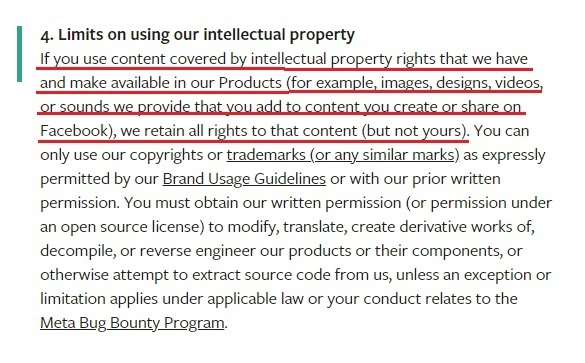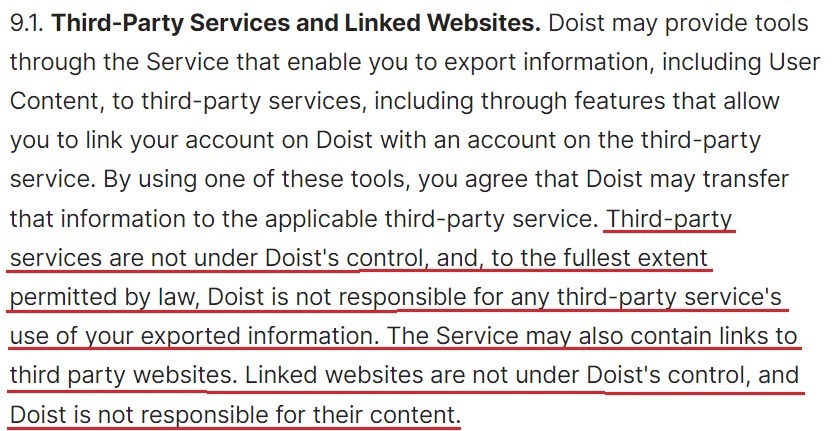What Should a Terms and Conditions Agreement Include?
A Terms and Conditions agreement is part of any successful software or website. It protects your business from disputes that may arise between you and your users by clearly outlining appropriate use cases, penalties, copyright information, and more through a series of clauses that users must agree to before using your software.
This article will explain the benefits of having a Terms and Conditions agreement and help you write your own by outlining all of the essential clauses. It will show you how to best display your agreement and get users to agree to it in a legally binding way.
What is a Terms and Conditions Agreement?
The Terms and Conditions agreement is a binding legal document establishing the regulations and guidelines that users must follow when using your software or website. They contain specific clauses defining the permitted use of your intellectual property, account termination, the extent of your liability, and the laws that govern the agreement.
A Terms and Conditions agreement is also known by other names, such as a Terms of Use or a Terms of Service.
While businesses are not legally required to provide a Terms and Conditions agreement Agreement, having one is highly recommended.
Why Should You Have a Terms and Conditions Agreement?
Having a Terms and Conditions agreement comes with many benefits. Terms and Conditions agreements can help protect businesses by managing user behavior and minimizing legal risks.
A Terms and Conditions agreement outlines the rules and guidelines for how users can use your software. By clearly stating what is acceptable and what is not, you can manage your service and users more effectively.
Important Clauses to Include in a Terms and Conditions Agreement
A Terms and Conditions agreement gives you control over important aspects of your software, such as pricing, shared content, prohibited uses, and others. It also gives you the right to take action against users who violate the terms.
Having a Terms and Conditions agreement helps protect your intellectual property and limits your legal liabilities. It also presents a professional image to your users and potential customers.
Allowed And/Or Prohibited Uses Clause
This clause allows you to restrict certain activities on your software. Its purpose is to specify prohibited activities, such as illegal content, abusive behavior, spam, and other law violations. This clause is also used to ensure compliance with your community standards.
This clause may outline that failure to comply with the agreement will result in severe penalties or the termination of an offending user's account.
Here's an example:

Disclaimers and Warranties
This clause limits your liability by acknowledging that your service may not always work as intended. For instance, if your service becomes inaccessible due to a server failure, you can't be held responsible for any damages your users may have incurred.
This clause can also shield you from other damages your users may suffer, such as those caused by downloading malware, falling for phishing scams, or viewing harmful content.
Here's an example:

Intellectual Property (IP)
This section specifies the regulations for intellectual property and usage permission of your service. This protects your intellectual property from misuse, misrepresentation, and plagiarism.
IP refers to an asset that is not tangible but created through human intelligence and creativity. IP includes a wide range of things, such as designs, patents, databases, and artistic works. These types of IP are often valuable assets that require legal protection to prevent unauthorized use, copying, or distribution.
Here's an example:

Copyright Information
If your software enables content sharing, this clause notes that users maintain ownership of the copyright and proprietary rights of the content they share. This means users are responsible for ensuring that they have the right to use the said content, and if not, that they are responsible for any resulting legal issues.
Additionally, this clause may state that your company is not obligated to monitor the content that users share, which can limit your liability.
Here's an example:

Links to Other Websites Disclaimer
This provision protects your business against possible legal problems if a user accesses another site or software through your service. For instance, if an external website is embedded on one of your pages as an affiliate link, this provision notifies users that they assume all risks associated with accessing these links through your service.
Here's an example:

Governing Law
The governing law clause in your Terms and Conditions agreement establishes the laws that will apply to any disputes between you and your users. Given that your service may have a global reach, it is important to specify which country's laws will apply to enforce the Agreement.
This is an example:

Termination Clause
This clause explains the process for ending the Terms and Conditions agreement between users and the company. Termination by the company occurs when a user violates the Agreement. The termination clause may also detail scenarios where a refund or payment is necessary between the parties.
Here's an example:

How to Display and Get Agreement to a Terms and Conditions Agreement
It's essential that your users explicitly agree to your Terms and Conditions agreement Agreement to ensure it is legally binding. One way to ensure this is to make the Agreement easy to find, such as during the user sign-up process. This means that individuals who wish to use your service must first agree to your Terms and Conditions, providing you with protection and control over all your users.
Aside from being easy to find, it's also important to ensure that the Terms and Conditions agreement is easily accessible to your users. You can include the Agreement during sign-up, on your website footer, or on the sign-in page. You can also provide links to it throughout the site. If you have a software app, include it in the primary dropdown menu. Here's how Amazon includes their Conditions of Use on their website footer:

In addition to clearly displaying your Terms and Conditions agreement, you will need to select a method for users to register. Browsewrap is one way to obtain implicit agreement to your terms and conditions. This informs users that they automatically agree to your terms when they sign up. Essentially, this is an implied agreement. However, we do not recommend using a browsewrap for reasons that will be explained later.
The most effective method to obtain user consent for your terms and conditions agreement is using a "clickwrap" feature on your website or application. This clickwrap usually consists of an "I Agree" checkbox that users must select to indicate their explicit acceptance of your terms.
Here's an example of this:

The Case For Clickwrap
To understand why clickwrap is a better choice than browsewrap, it's important to look at a key legal case between Specht and Netscape Comms. Corp.
In this case, Specht and other plaintiffs (the Plaintiffs) installed a Netscape program called SmartDownload. The Plaintiffs later learned that SmartDownload transmitted their personal information to Netscape while using the program to browse the internet.
The Plaintiffs claimed their privacy was violated and filed a lawsuit against Netscape. Netscape argued that the Plaintiffs had accepted an arbitration clause when they downloaded SmartDownload.
The Court's obligation in this case was to establish whether the Plaintiffs had consented to be bound by the software's license agreement.
On Netscape's page to download SmartDownload, a "Start Download" button was prominently displayed. However, the Plaintiffs would've had to scroll down the page to find the software's license agreement, which was not placed near the download button. If the Plaintiffs had scrolled down, they would have seen a statement saying:
"Please review and agree to the terms of the Netscape SmartDownload software license agreement before downloading and using the software."
The software license agreement contained a clause stating:
BY CLICKING THE ACCEPTANCE BUTTON OR 10 INSTALLING OR USING NETSCAPE COMMUNICATOR, NETSCAPE NAVIGATOR, OR NETSCAPE SMARTDOWNLOAD SOFTWARE (THE "PRODUCT"), THE INDIVIDUAL OR ENTITY LICENSING THE PRODUCT ("LICENSEE") IS CONSENTING TO BE BOUND BY AND IS BECOMING A PARTY TO THIS AGREEMENT
However, this statement was not displayed or indicated anywhere near the download button for SmartDownload. It was inconspicuous. Due to this, the Court concluded that:
"Although an onlooker observing the disputed transactions in this case would have seen each of the user plaintiffs click on the SmartDownload "Download" button [...] a consumer's clicking on a download button does not communicate assent to contractual terms if the offer did not make clear to the consumer that clicking on the download button would signify assent to those terms. [...] California's common law is clear that "an offeree, regardless of apparent manifestation of his consent, is not bound by inconspicuous contractual provisions of which he is unaware, contained in a document whose contractual nature is not obvious."
The terms of the license agreement were not binding on the Plaintiffs due to its inconspicuous nature. The agreement's terms were not clearly associated with the download button, thus rendering it legally unenforceable against the Plaintiffs.
Based on this case, we can see the importance of explicit over implicit agreement. As browsewrap can be ambiguous about whether or not there is an implicit agreement, clickwraps are a much more reliable way to obtain your user's consent. This is because clicking on the "I Agree" checkbox leaves no room for interpretation if users explicitly consent to the agreement.
Conclusion
A well-crafted Terms and Conditions agreement is crucial to regulate your users as they use your software. In case of user violations, this agreement empowers you to manage these disputes as outlined in the contract. This can be penalties ranging from account suspension, termination, or any other measures outlined in the Terms and Conditions.
Terms and Conditions agreement are naturally tailored to your software, company values, and place of business. However, most Terms and Conditions agreement have similar essential clauses such as copyright information, disclaimers, acceptable use, and governing law.
Finally, to ensure that all your users explicitly agree to be legally bound by your terms and conditions, it's important to have them acknowledge it through a clickwrap or an "I Agree" button during sign-up. It's also crucial to display the Terms and Conditions agreement throughout your website as a link embedded in your other pages, during log-in, as a searchable document, or as part of a menu.
By considering all of the above when creating your Terms and Conditions agreement Agreement, you are setting up your business for success by regulating your users and protecting yourself against any disputes that may arise.